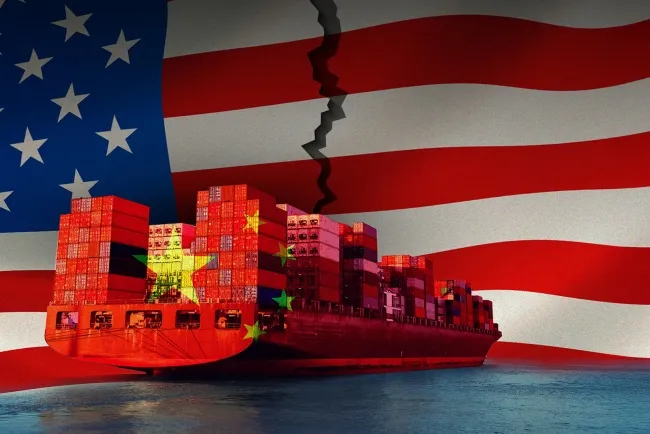US-China Trade War Escalates: Trump's Tariffs Reach 104%
As tensions between the US and China escalate, a new wave of tariffs imposed by the Trump administration threatens to plunge both economies into a deeper trade war. With sweeping 10% tariffs taking effect, market sell-offs have occurred globally, leading to heightened recession fears. The implications of these tariffs are profound, particularly for American agriculture and global trade dynamics.

Market Reactions and Economic Impact
The recent tariffs, which now include a staggering 104% on certain Chinese goods, have sparked significant market volatility. The dramatic adjustments have raised concerns among investors and traders alike, as uncertainty looms over the future of international trade. The trade representative, Jameson Greer, indicated that exemptions to these tariffs are unlikely in the short term, emphasizing the administration's commitment to reducing trade deficits and achieving reciprocity with trading partners.
The agricultural sector, in particular, faces immediate challenges due to retaliatory tariffs from China, which have imposed 34% tariffs on American goods. American farmers are experiencing decreased demand for their products as export markets become less competitive. The American Farmers Bureau Federation has noted that over 20% of farm income is derived from exports, highlighting the vulnerability of the agricultural sector in the face of these trade policies.
International Responses and Negotiations
The global response to Trump's tariff strategy is mixed. Brazilian President Lula de Silva expressed skepticism about the efficacy of the tariffs, advocating for a balanced approach that aligns with Brazil's economic realities. Additionally, Italy's Georgia Meloni is set to visit Washington to discuss the situation with Trump, as the European Union seeks to prevent an all-out trade war.
While the White House claims that nearly 70 countries have reached out for negotiations to mitigate the impact of the tariffs, the specifics remain unclear. The Trump administration insists that these tariffs serve as leverage in trade negotiations, though many foreign leaders and business executives are seeking clarity amid the shifting landscape of international trade.
Long-Term Implications and Future Outlook
The long-term consequences of these tariffs remain uncertain. With American consumers facing rising prices on imported goods and farmers grappling with increased costs for equipment and parts, the economic ripple effects could have lasting implications. As Trump continues to push his agenda to revitalize American manufacturing, the balance between protectionism and free trade hangs in the balance.
In conclusion, the ongoing trade war between the United States and China presents complex challenges for both nations and the global economy. The potential for further escalation remains high, and stakeholders from various sectors are watching closely as negotiations unfold. The future of international trade could hinge on the outcomes of these tariffs and the willingness of global leaders to engage in meaningful dialogue.
What's Your Reaction?
















